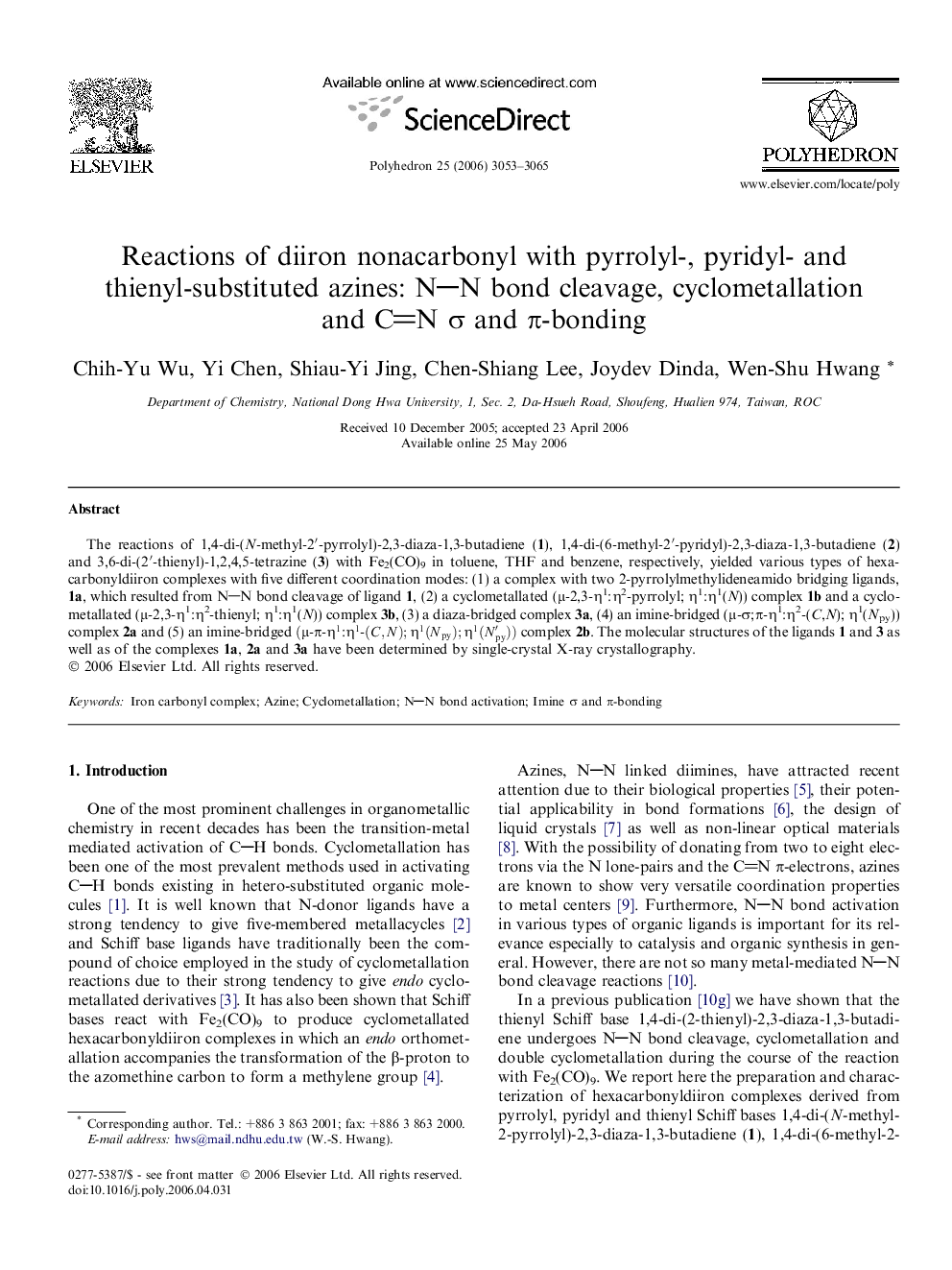| کد مقاله | کد نشریه | سال انتشار | مقاله انگلیسی | نسخه تمام متن |
|---|---|---|---|---|
| 1335654 | 979541 | 2006 | 13 صفحه PDF | دانلود رایگان |

The reactions of 1,4-di-(N-methyl-2′-pyrrolyl)-2,3-diaza-1,3-butadiene (1), 1,4-di-(6-methyl-2′-pyridyl)-2,3-diaza-1,3-butadiene (2) and 3,6-di-(2′-thienyl)-1,2,4,5-tetrazine (3) with Fe2(CO)9 in toluene, THF and benzene, respectively, yielded various types of hexacarbonyldiiron complexes with five different coordination modes: (1) a complex with two 2-pyrrolylmethylideneamido bridging ligands, 1a, which resulted from NN bond cleavage of ligand 1, (2) a cyclometallated (μ-2,3-η1:η2-pyrrolyl; η1:η1(N)) complex 1b and a cyclometallated (μ-2,3-η1:η2-thienyl; η1:η1(N)) complex 3b, (3) a diaza-bridged complex 3a, (4) an imine-bridged (μ-σ;π-η1:η2-(C,N); η1(Npy)) complex 2a and (5) an imine-bridged (μ-π-η1:η1-(C,N);η1(Npy);η1(Npy′)) complex 2b. The molecular structures of the ligands 1 and 3 as well as of the complexes 1a, 2a and 3a have been determined by single-crystal X-ray crystallography.
The reactions of pyrrolyl, pyridyl and thienyl azines with Fe2(CO)9 yielded various types of diironhexacarbonyl complexes with different coordination modes, which resulted from (1) NN bond cleavage, (2) cyclometallation, (3) diaza-bridge coordination, (4) σ- and π-imine bridge coordination and (5) π-imine bridge coordination of the ligand.Figure optionsDownload as PowerPoint slide
Journal: Polyhedron - Volume 25, Issue 15, 3 November 2006, Pages 3053–3065